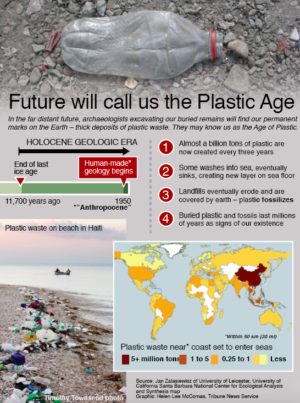Drowning in Plastic: a Worldwide Epidemic
The Earth Day Network’s 2018 focus on plastic pollution should encourage less wasteful lifestyles.
PHOTO | Tribune News Service
Charred debris litters the base of the Malibu hillside.
More than one million plastic bags are used every minute, 500 billion every year, according to EcoWatch. Each and every bag will continue to exist for up to 1,000 more years, unless it is recycled (only one percent are, according to Waste Management). All this plastic ends up in ocean garbage patches– 10 metric tons enter the Pacific Ocean every day from Los Angeles alone, according to the Center for Biological Diversity. Americans’ use of plastic has grown into an epidemic that not only affects our country, but also the oceans, wildlife, and human health worldwide. The problem needs to be addressed its root– unnecessary consumption– or else the world around us will continue to be degraded.
We need the ocean to survive– it provides us with the oxygen we breathe, it absorbs excess carbon dioxide we produce, and it supplies us with food. This essential part of earth is being degraded by careless use of plastic. The Pacific Garbage Patch is now three times the size of France, according to CNN. Every year, 100,000 marine animals– animals that people depend on for food– are killed by plastic bags, according to Waste Management. On top of that, one million seabirds die every year from plastic pollution.
Toxins from plastic are ingested by fish, and later by humans who eat the fish, according to the Geological Society of America. So plastic pollution isn’t just a problem for wildlife– it’s a threat to human health.
Considering that plastic bags are used for an average of 12 minutes according to the Center for Biological Diversity, all this damage to human health and the environment is completely unnecessary.




